Albera cattle, a catalan native breed
“ w o o o o h ”
Scroll to discover
We use cookies to ensure that we give you the best experience on our website. If you continue using the site, we'll assume that you are happy to receive all cookies on this website. You can get more information, or know how to change the settings, in our cookie policy.
“ w o o o o h ”
Scroll to discover
The forms of pastoralism proper to the Albera are already mentioned in 1148 in a document granting the grazing rights of the Catalan royal house to the monks of Vallbona, whose territory then extended over the two slopes of the Albera mountain range. In 1868 there is already a mention of a particular breed of cows from Albera, but the description of the breed was not made until the middle of the last century, in the doctoral thesis of Mascort (1957).
At present, this breed is leading a recovery project run by the Baussitges Association of Albera Cow’s Friends (ABAVA), which intends to save it from the danger of extinction. All specimens belong to ABAVA. The mother herd (350 individuals) grazes on the Baussitges estate, within the Albera Natural Park. Thirteen more livestock farms, distributed throughout Catalonia, with a total of about 250 individuals, collaborate with the project as breeding cores essential for the survival of this breed. From the Association we thank all these farmers for their efforts of keeping the herds on their property.
We have two colorations of the Albera cow, the fagina cow and the black.
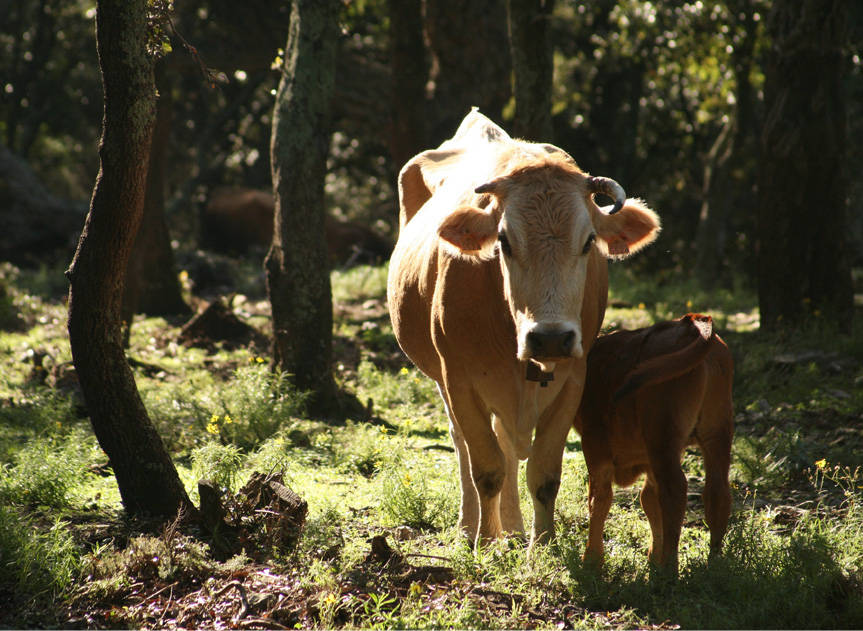
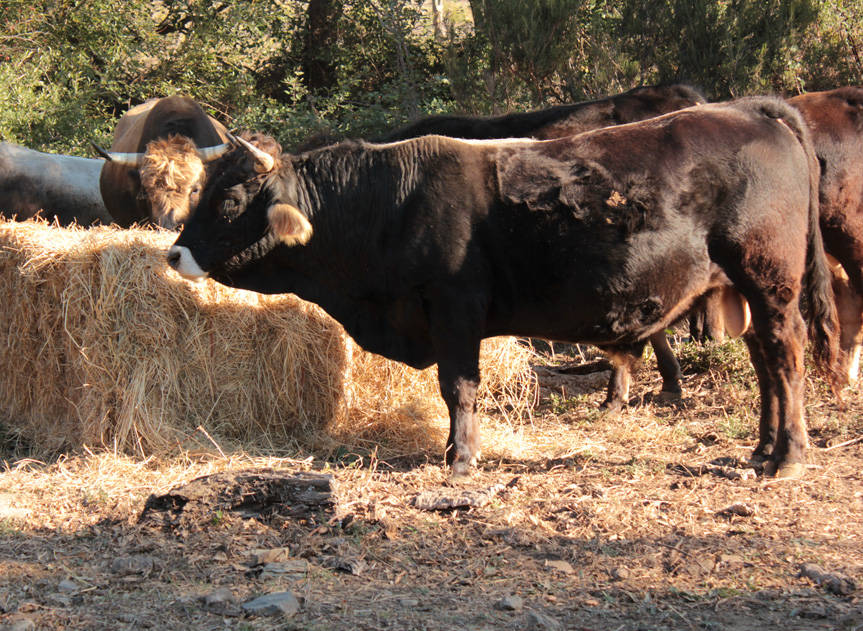
Albera is a Catalan cattle breed indigenous to the Albera Massif that is now in danger of extinction. Rustic, agile and of small stature, they live in semi-freedom, being highly resistant to cold and well adapted to the steep and wooded terrain of the massif.
This cattle forage on the vegetation of the forests and meadows that they have at their reach. Branches, sprouts, tree fruits and little grass are their food. This, together with its rusticity and its adaptation to living in mountain areas, makes it a very efficient tool to clean forests and fighting forest fires.
With the arrival of spring the herds go up to the ridges in search of new pastures and fresh air. They stay there until after summer. With the first storms of autumn they begin to get down looking for the shelter of the lower parts of the valleys, where they will pass the rest of the fall and the winter. During this period, coinciding with the time of calving, they receive additional feed, either in the form of forage or tacos (compacted alfalfa, cereals and molasses).
The recovery of old meadows turned scrubland or forests, as well as the clearing of the forests that have invaded areas of old terraces, are indispensable works to make this cattle project sustainable in Baussitges.
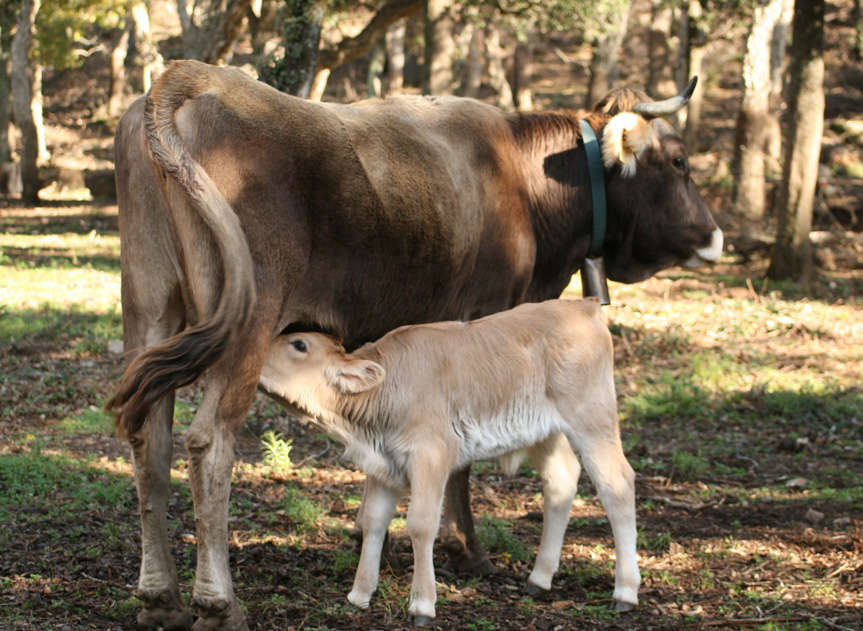
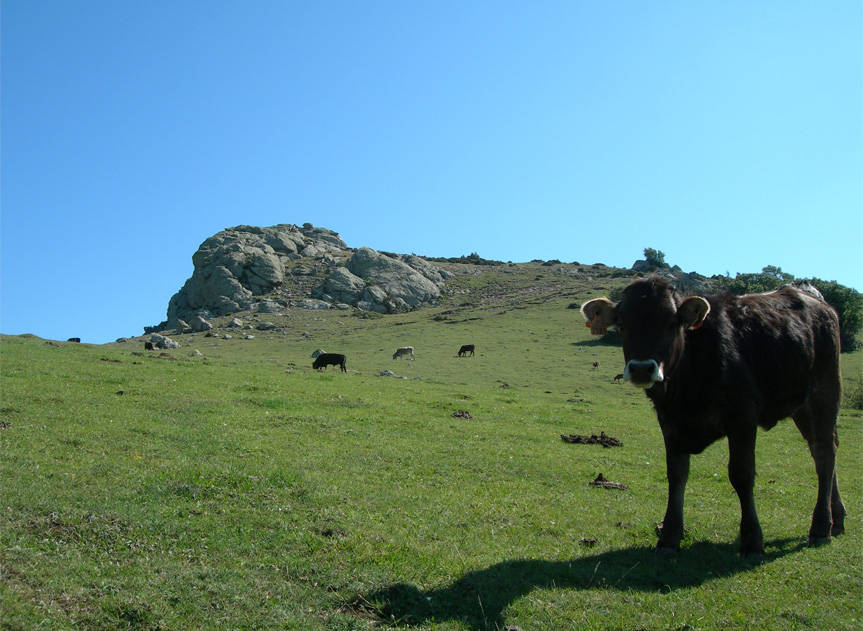
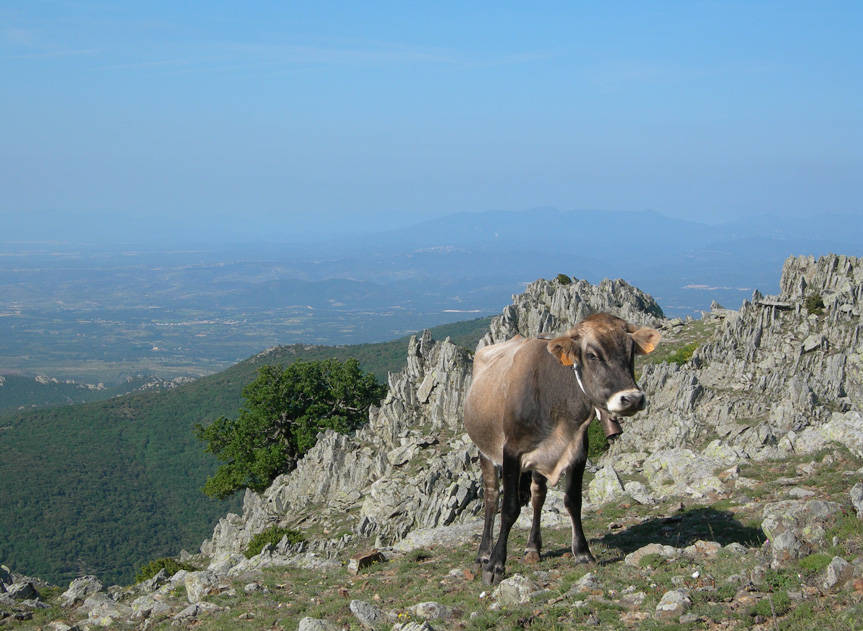
The five fundamental morphological features that define this breed are:
1.- It is a strong and resistant breed, very well adapted to the cold of the winter. Agile and of small stature, is able to move by very uneven terrain. This adaptation makes it a formidable natural brushcutter very useful in forest cleaning and fire prevention.
2.- The head has a solid and elongated appearance, the eyes are prominent and the facial region is elongated. The nose is usually pigmented in black or bordered in clear. The horns are mostly in crescent or short hook, of discrete size, white with black tips and generally sawed in the adults. The neck is long and flat.
3.- The trunk is flattened, narrow and deep, with the cross prominent and split. The back and back are sparsely muscled and tend to saddle. The belly is bulky and the croup presents a horizontal profile. The tassel of the tail is abundant.
4.- The mammary system is small, covered with fine and long hair. The milk produced by the mothers is sufficient to carry forward the calves. Well-fed mothers during gestation and breastfeeding period, markedly increase milk production. This directly influences the growth of newborns. The milk is very creamy and concentrated. Analyzes are missing to determine their composition. Soon we will look for resources to be able to make preliminary studies of the characterization of the milk.
5 .- The extremities are strong, with well-defined joints. The hair is abundant, with a great chromatic variety, from black to blond, with gradual discoloration of the lower parts of the trunk, the ribbon, ears, corneal base and bangs. Typical of this breed are the black-brown chocolate colors, with a large variation of shades, and the beige.
The meat, 100% organic, tender and tastier than most meats that we find today in the market, has a slight taste of Mediterranean herbs and medium fat content. These characteristics make it one of the healthiest for consumption.
The sale of meat begins to be a considerable aid for the sustainability of the project.
The recognition of our efforts by the Administration that starts to appreciate the importance of the herds returning to circulate by our mountains thus reducing the risks of fires, combined with the interest in the maintenance of the native country breeds encourage us to go ahead with this project, not to mention an increasingly general concern for a healthy and clean food.
The recovery program started in 2010 seeks to increase its population to remove this breed from the danger of extinction.
The three main objectives pursued since 2010 are the following: to improve calf transformation and fattening, to increase breed population and to recover pasture at the mother farm, Baussitges.
For seven years, improvements in calf transformation have been significant and have resulted in the production of tender, tasty meat with a correct proportion of fat.
The extraordinary work on the quality of this meat made by Joan Dalmau has encouraged new breeders to take care of this breed. The meat begins to be valued by the best Spanish cooks and an audience that is becoming more and more extensive.
In the society increasingly aware of animal welfare, the fact that animals are raised in respectful and healthy conditions, both for the animal himself and the environment, helps us achieve our breed conservation goals.
Since the very start of the project and until today, all born females are kept to increase the total herd. Males, except for stallions, are intended for fattening.
The program of small herd transfers has also contributed to expand the breed: in 2010 we only found Albera cattle in Baussitges and now we find them in 13 more livestock farms, distributed throughout the Catalan territory and France, with a total of 600 animals.
The work done so far has helped us to combat this breed's bad reputation with regard to the production of calves and their transformation. It is true that a cow grazing in the hard mountain environment like Albera Massif will address its energies to survive at the first place. At a time when food needs are well covered, some of their energy may be used on other purposes, such as reproduction, in the case of adult cows, or fattening, in the case of calves.
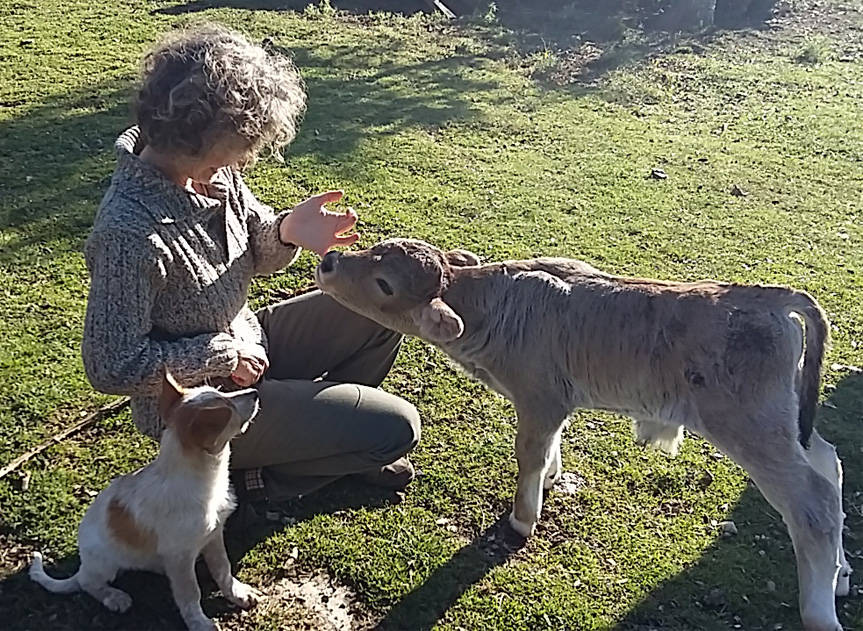
Do you want to collaborate with the project?
Everyone is wellcome to join our exciting project. If you want to participate, contact us.
1.- They climb up the mountain in spring: with the arrival of spring and the flowering of the heather the cows begin to ascend towards the ridges of the Albera mountain range, where they will spend the summer enjoying the freshness of the oak and beech forests and of the pastures of the mountain ridges.
2/3.- Summer in the cool mountain ridges along the French Catalonian border: the cows climb up looking for the freshest and the tenderest pastures of the heights. Up there is another world! When in summer everyone wears T-shirts and craves for the freshness of the sea breeze, there is never a spare long-sleeved up there. The cattle free from mosquitoes, flies and people. These cows are not fools, no! They enjoy the paradise that is those lands and the bonanza of the summer time. For us the time of the "rounds" begins: foot walks and car drives to control the movement of the cattle up there to avoid that they descend too much and damage the vineyards of the French slope. Being able to find a cowherd who could spend the summer with them up in the mountains is one of our challenges today. We are looking for someone to register births, control the small calves and know their location.
4/5.- First fall storms - Supplementary feeding during autumn-winter: when the first storms begin at the end of the summer the first cows begin to descend into the valleys. Each to its valley! Cows from different herds get hardly confused and mixed. And in the valleys we are excited to receive them another year and see our forests with these animals so dear. Here comes the time of feeding the cattle. We separate the ones that are weak so that they can recover little by little, and we give fodder and pelleted food to the others. Little by little the three Baussitges herds get formed with the individuals that are descending from the crests.
6.- Births and nurseries: the first births of the new season begin in September. Albera cow gives birth without any problems. Small, vivacious little calves, light brown in color that grows dark with age. Step by step, more and more little ones are populating the forests. Some mother keeps watch while the others go to look for food in the forest. Two or three mothers form "day care" controlling up to 15-20 newborn calves. Curious, playful! It’s a whole experience to see it!
7.- Closure of animals in winter: when winter is already looking towards spring, but before the cows feel the call of the fresh grass of the ridges, we start with the first "esquellades". They are usually done during the months of January-February-March, depending on the year. It is the day when all the cattle of a herd are gathered to carry out the obligatory veterinary control, to put new collars, to change the damaged bells, to count the little ones born during that season, to separate some individual who needs a special care and other things to do with the herd. Times ago it used to be a holiday and a day of work: the French cowherds came to help us. The typical dish of this day was cooked: Blanquette de Veau made from the Albera veal. After finishing all the work, it was time to relax. Some poem or a song always accompanied the good meal ... it was the moment to recall anecdotes of old times. Once a lovely feast, today it turned into just a day of work. Recovering this tradition is another of our goals.